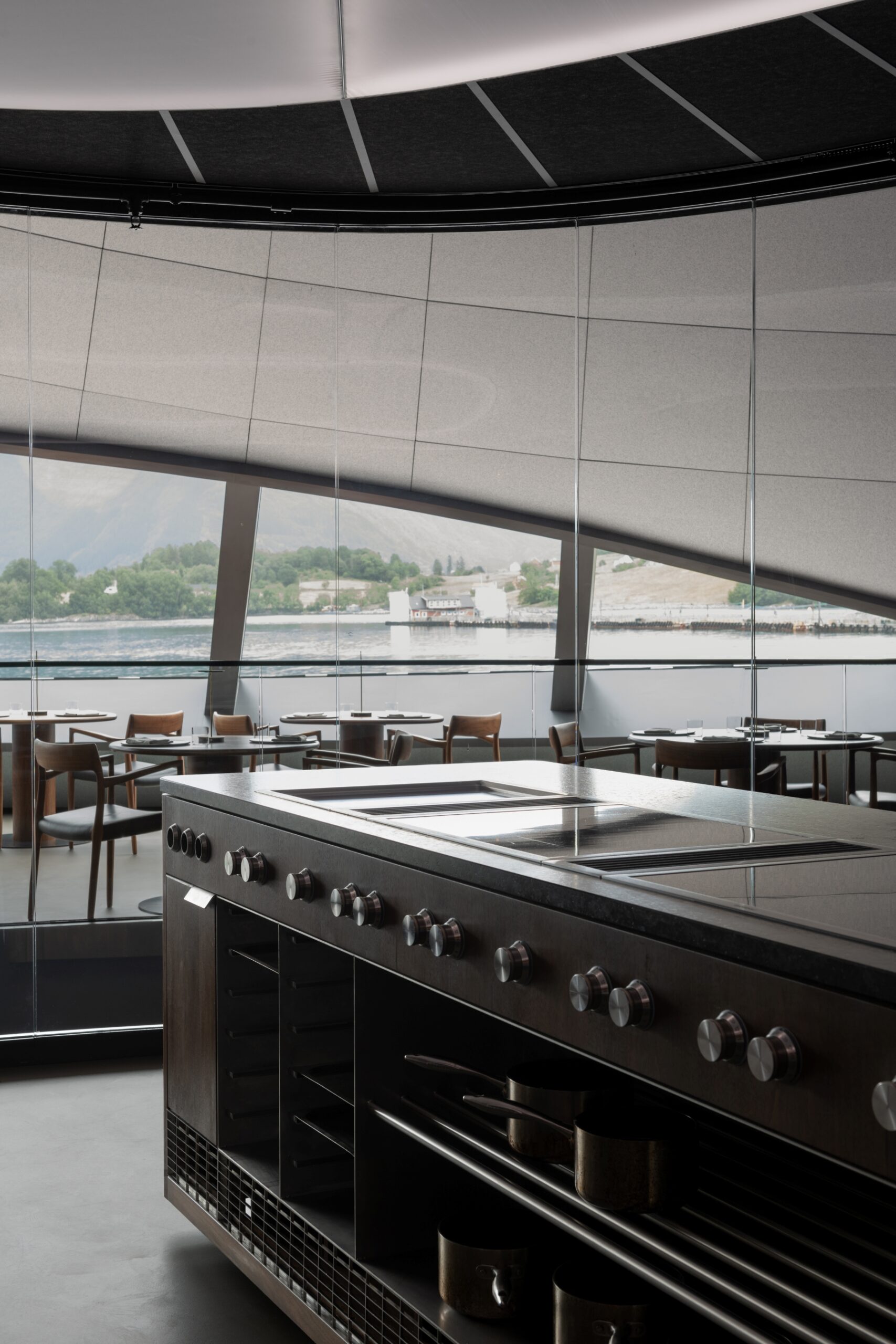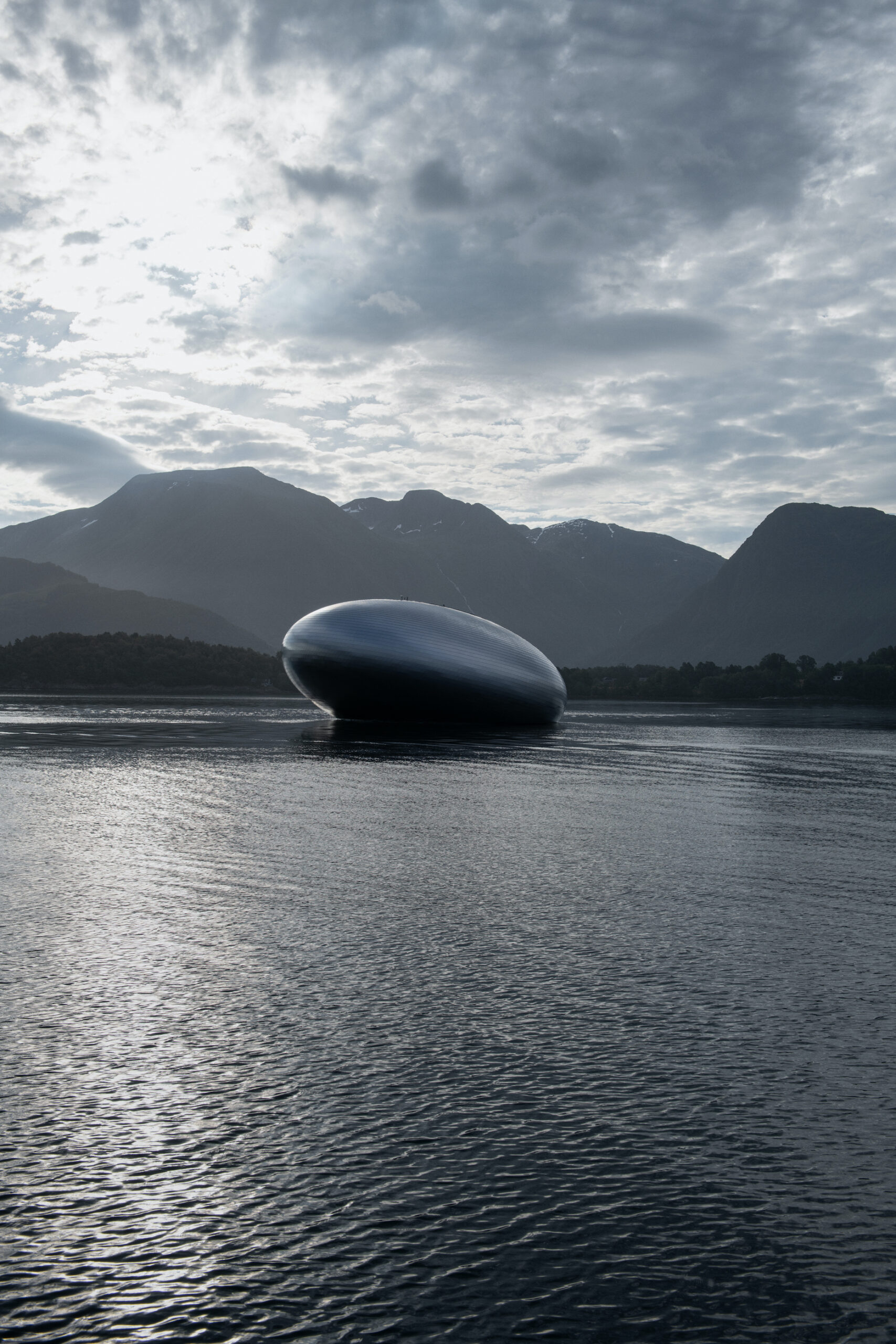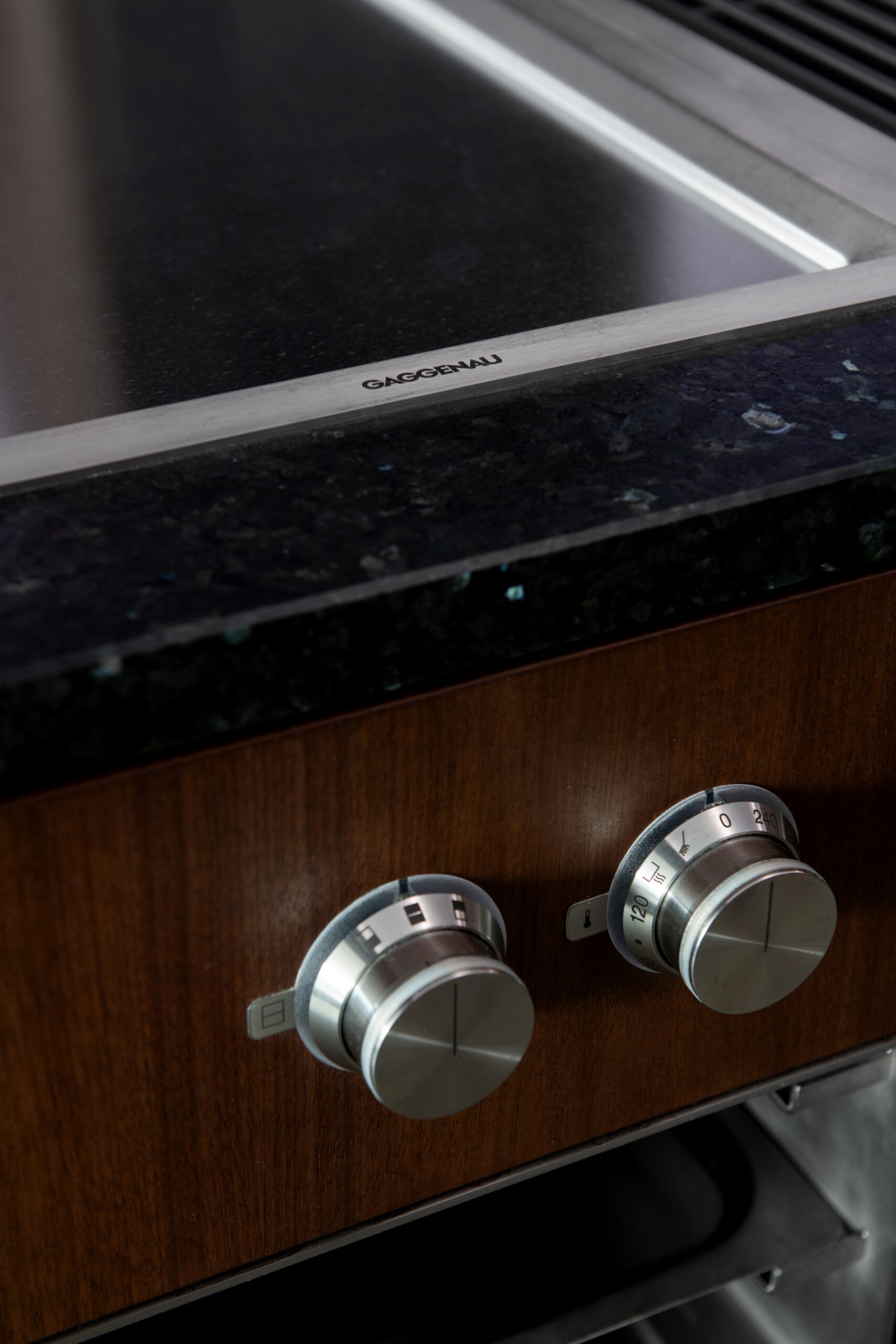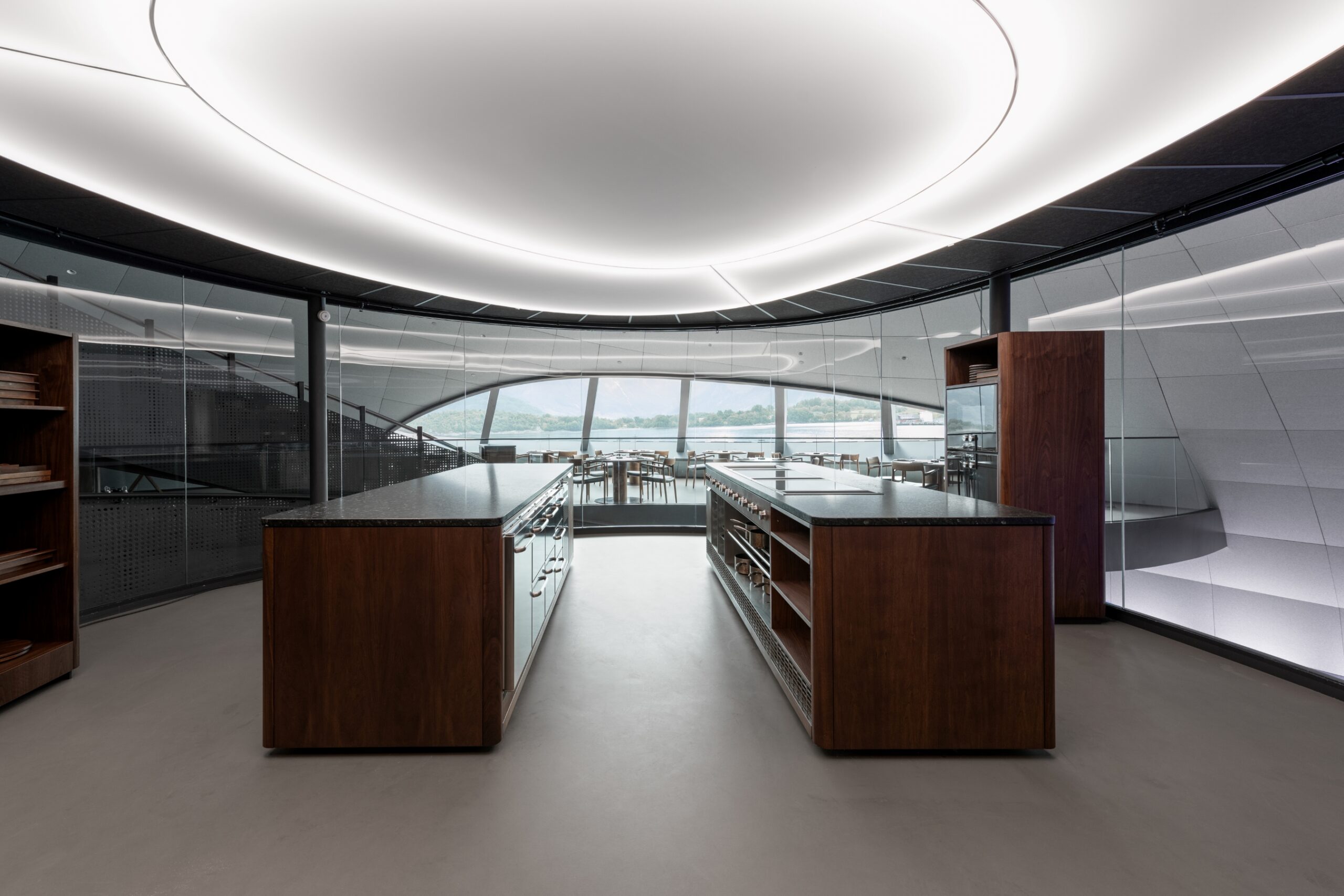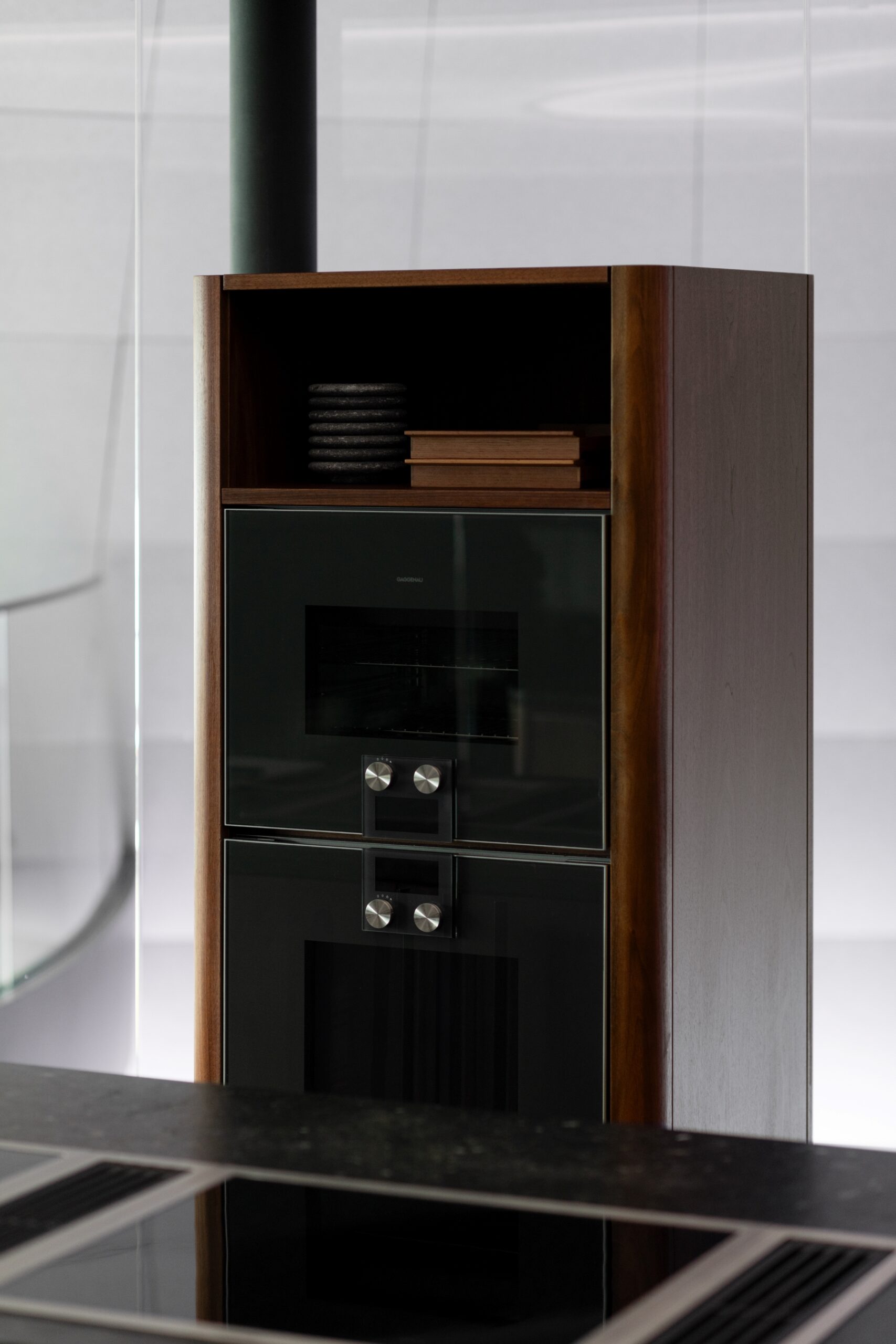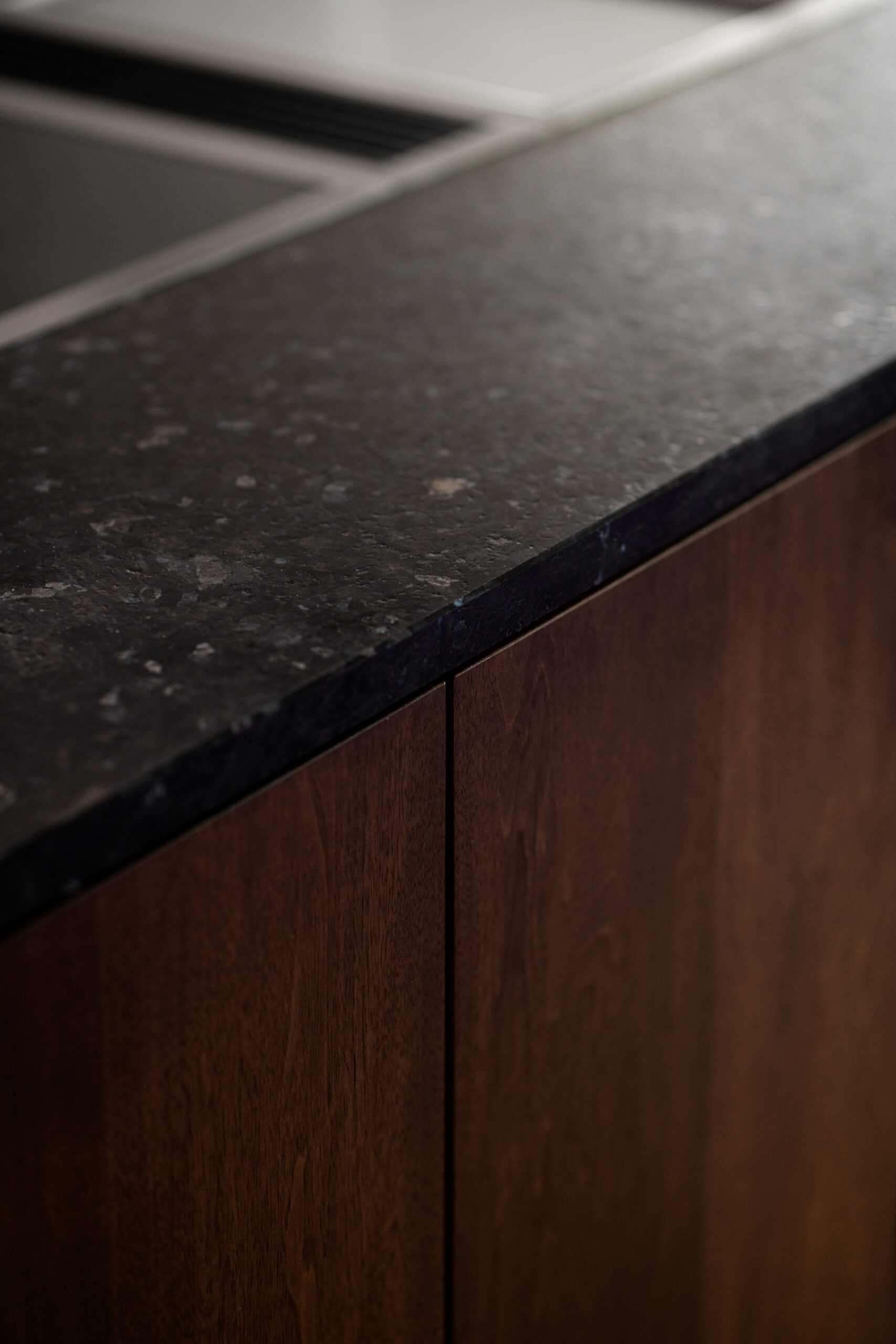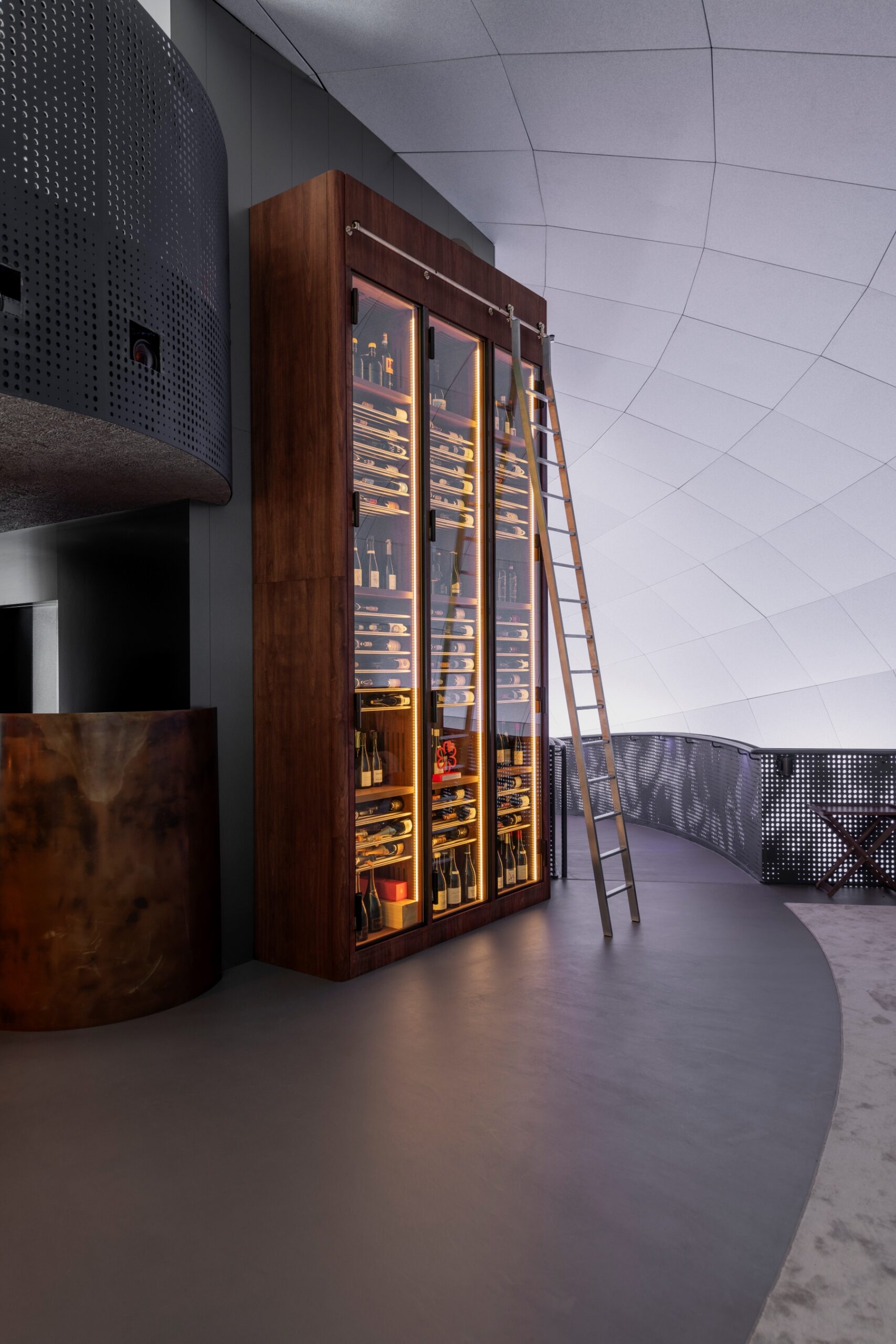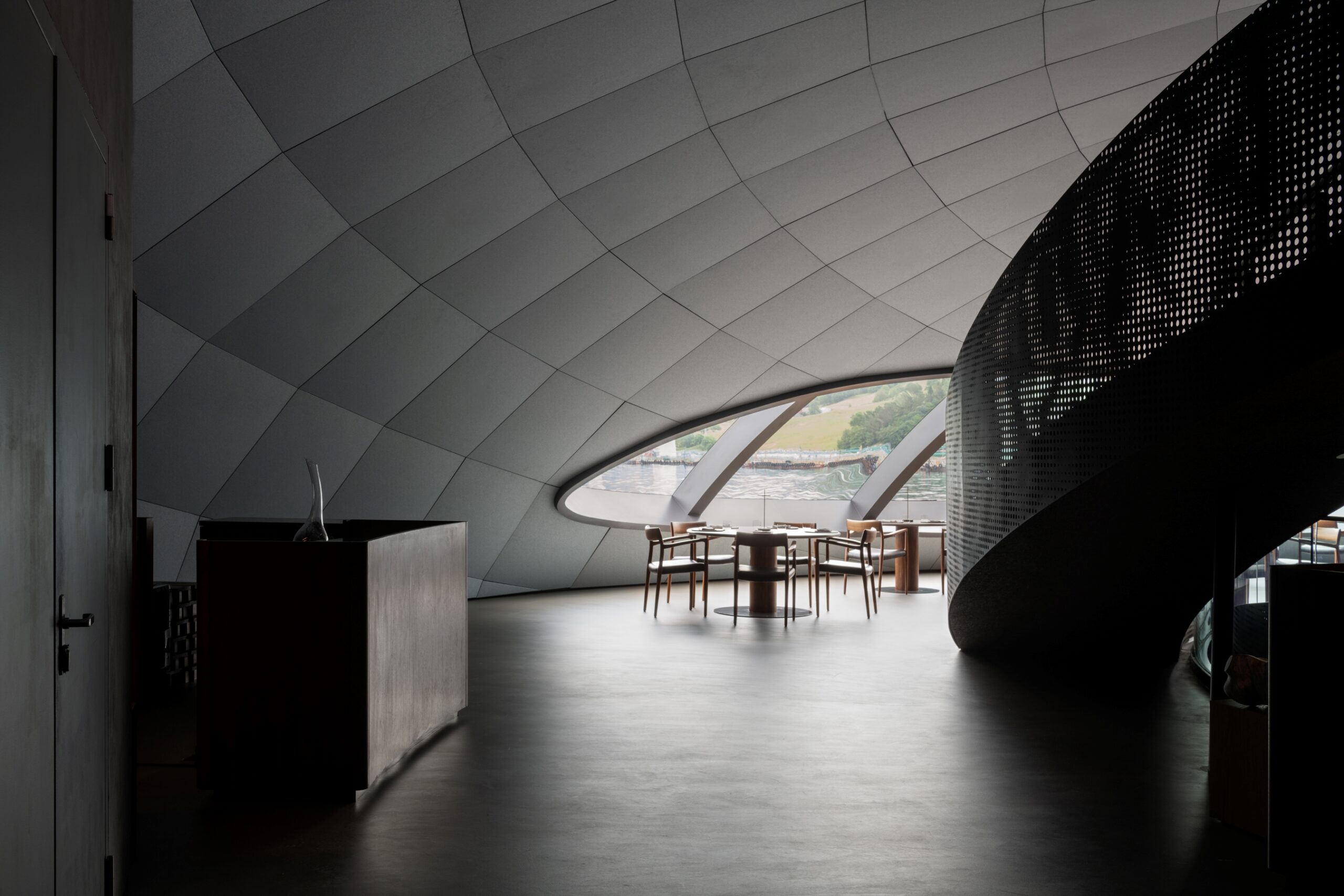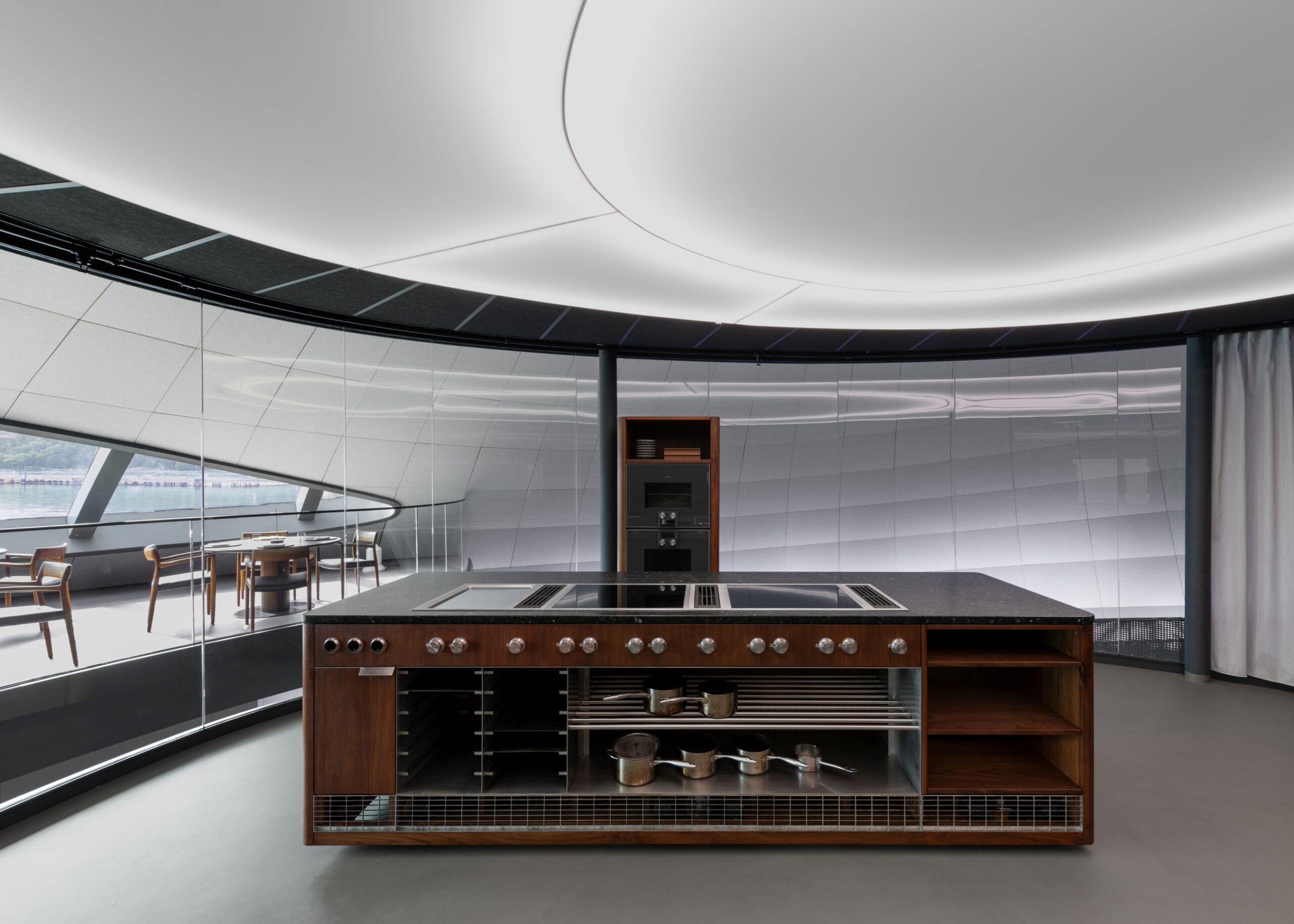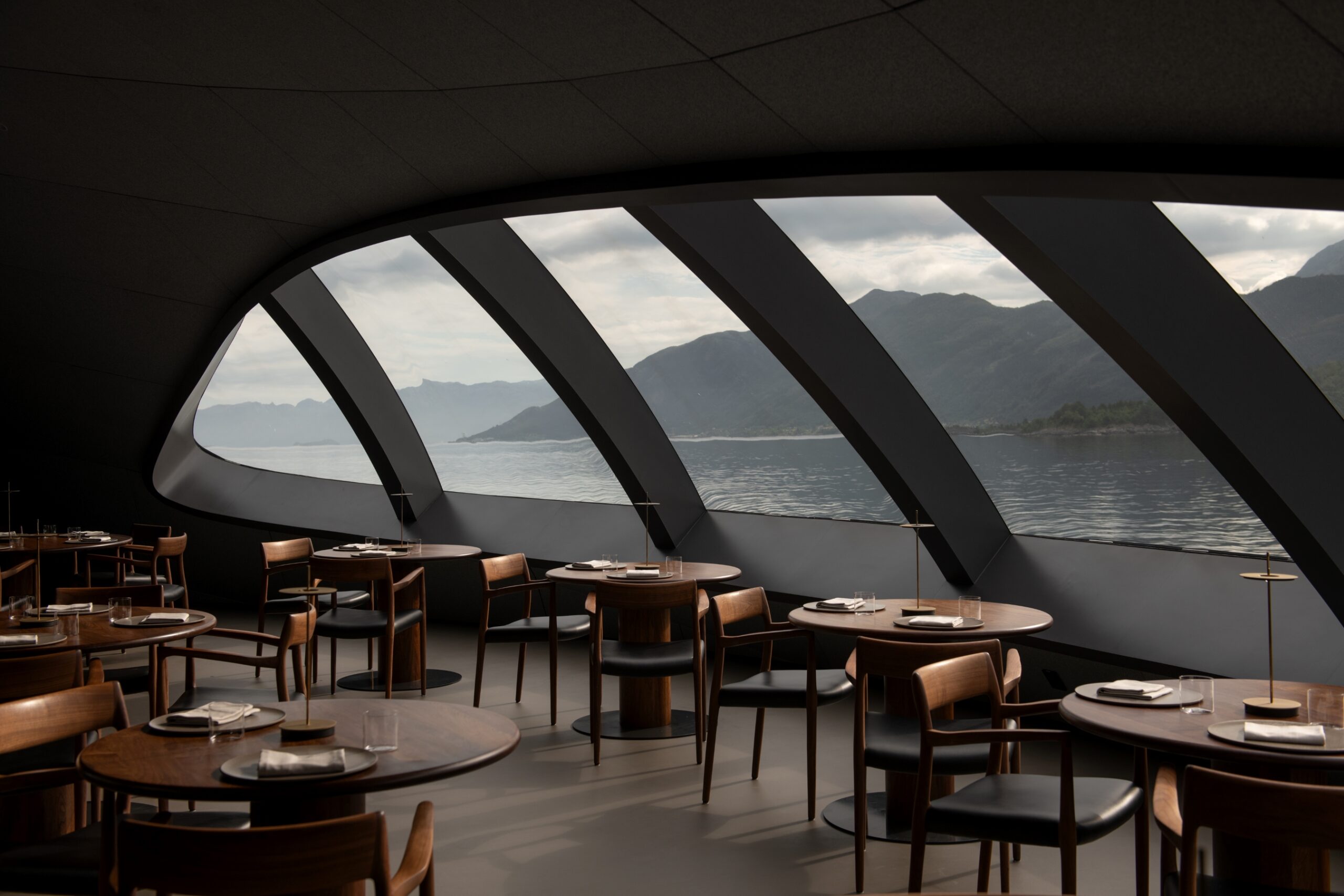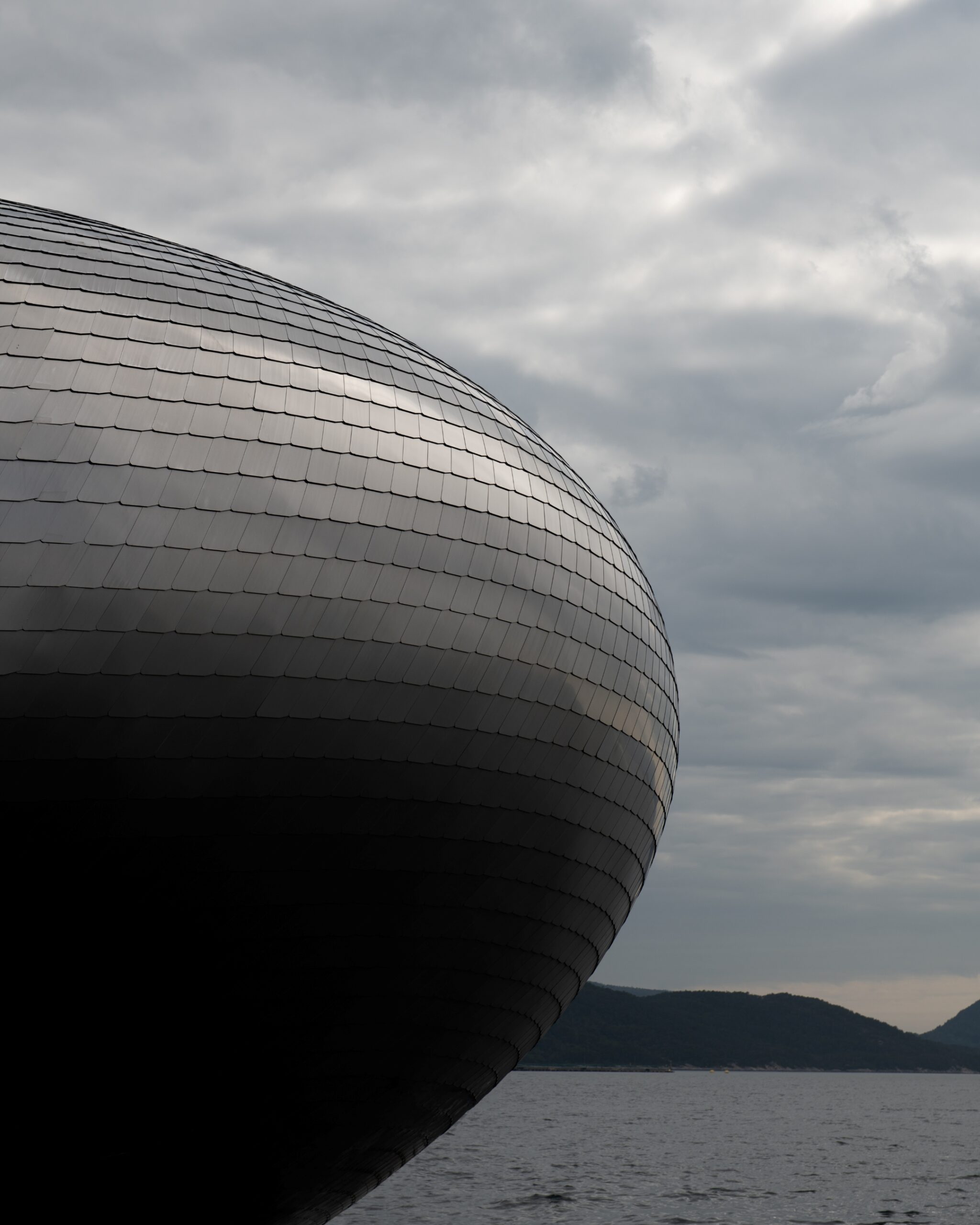RESTAURANT IRIS
In the majestic Hardanger Fjord, you’ll find Rosendal and the otherworldly structure of ‘Salmon Eye’, anchored up a short boat ride from the historical Baroniet castle and Rosendal Hotel. Originally designed as a visitors center for the aquaculture industry, we now find the Michelin star awarded Restaurant Iris onboard the Eye, making the scene for a spectacular dining experience – expedition dining – as coined by the initiators. In a project distinguished with boundless ambition, we are proud to have contributed to the development and furnishment of this absolutely unique restaurant.
The restaurant interior centers around two formidable kitchen islands visible through the glass of the elliptical kitchen and form the heart of the restaurant. The two floating “pods” are flexible, indicative of being islands on their own, and thereby an extension of the concept of Salmon Eye itself. Each island hovers on a shadow plinth made up from a six wheeled base, operational with individual electrical cabinets and equipped with cooktops, ventilation, cooling and specialized storage.
Designing with plenty of technical flexibility in mind, these islands have also brought on unexpected but nifty details ensuring both aesthetics, and functional needs. We like to highlight the rounded corners as a means for physical agility among the chefs, and the removable front ventilation grilles to access the wheel brakes. Even though the Salmon Eye is an anchored structure, the movement of the waves and resulting safety precautions were a part of the design criteria. The islands are accompanied with two moveable tall cabinets for ovens and heating cabinets, leaving the kitchen with 4 concise but distinguishable pieces of furniture, whereof their placement in the room are in essence flexible, completely separating this project from what a conventional layout-based kitchen would look like. This design gives the possibility to experiment, make alterations and figure out what feels right while working, rather than deciding all in the planning process.
Just outside the elliptical kitchen, the aesthetic format is continued in the form of a 4-meter-tall wine cabinet towering in the main room, balancing cooling technology, the sea, and wine storage in unmissable fashion. With the wine bottles displayed on a mix of tall shelves and stainless-steel pipes, it ties together the material palette through the opposing rooms. The subsequent production from Tjerand included dining and coffee tables, bars, shelving sections, serving trays, folding tables and other miscellaneous pieces of restaurant essentials, allowing a branded restaurant experience through unique furniture design down to every last detail.
Completed: May 2023
Type: Restaurant, industry kitchen - commercial
Location: Rosendal
Materials: Larvikite, walnut, steel, glass
Appliances: Gaggenau, Gram, Tapwell, Quooker
Furnishment: Fully equipped kitchen with 2 islands, wine cabinet, dining tables, bar and corner-bar, shelving units, serving cupboards
Photography: Ivar Kvaal
RESTAURANT IRIS
In the majestic Hardanger Fjord, you’ll find Rosendal and the otherworldly structure of ‘Salmon Eye’, anchored up a short boat ride from the historical Baroniet castle and Rosendal Hotel. Originally designed as a visitors center for the aquaculture industry, we now find the Michelin star awarded Restaurant Iris onboard the Eye, making the scene for a spectacular dining experience – expedition dining – as coined by the initiators. In a project distinguished with boundless ambition, we are proud to have contributed to the development and furnishment of this absolutely unique restaurant.
The restaurant interior centers around two formidable kitchen islands visible through the glass of the elliptical kitchen and form the heart of the restaurant. The two floating “pods” are flexible, indicative of being islands on their own, and thereby an extension of the concept of Salmon Eye itself. Each island hovers on a shadow plinth made up from a six wheeled base, operational with individual electrical cabinets and equipped with cooktops, ventilation, cooling and specialized storage.
Designing with plenty of technical flexibility in mind, these islands have also brought on unexpected but nifty details ensuring both aesthetics, and functional needs. We like to highlight the rounded corners as a means for physical agility among the chefs, and the removable front ventilation grilles to access the wheel brakes. Even though the Salmon Eye is an anchored structure, the movement of the waves and resulting safety precautions were a part of the design criteria. The islands are accompanied with two moveable tall cabinets for ovens and heating cabinets, leaving the kitchen with 4 concise but distinguishable pieces of furniture, whereof their placement in the room are in essence flexible, completely separating this project from what a conventional layout-based kitchen would look like. This design gives the possibility to experiment, make alterations and figure out what feels right while working, rather than deciding all in the planning process.
Just outside the elliptical kitchen, the aesthetic format is continued in the form of a 4-meter-tall wine cabinet towering in the main room, balancing cooling technology, the sea, and wine storage in unmissable fashion. With the wine bottles displayed on a mix of tall shelves and stainless-steel pipes, it ties together the material palette through the opposing rooms. The subsequent production from Tjerand included dining and coffee tables, bars, shelving sections, serving trays, folding tables and other miscellaneous pieces of restaurant essentials, allowing a branded restaurant experience through unique furniture design down to every last detail.
Completed: May 2023
Type: Restaurant, industry kitchen - commercial
Location: Rosendal
Materials: Larvikite, walnut, steel, glass
Appliances: Gaggenau, Gram, Tapwell, Quooker
Furnishment: Fully equipped kitchen with 2 islands, wine cabinet, dining tables, bar and corner-bar, shelving units, serving cupboards
Photography: Ivar Kvaal
